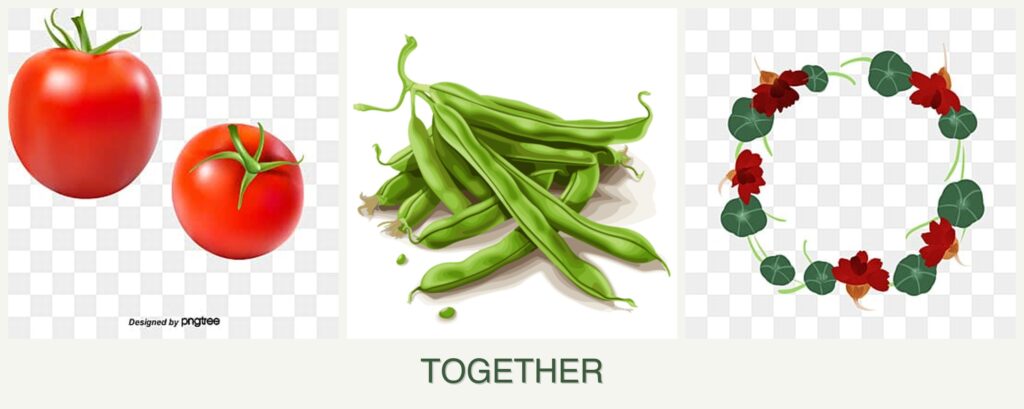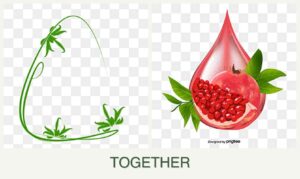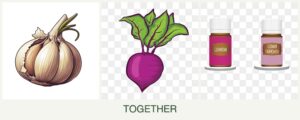
Can you plant tomatoes, beans and nasturtiums together?
Can You Plant Tomatoes, Beans, and Nasturtiums Together?
Companion planting is a popular gardening technique that involves growing different plants together to enhance growth, repel pests, and increase yields. Tomatoes, beans, and nasturtiums are often considered for this method due to their complementary characteristics. In this article, you’ll discover whether these plants can thrive together and learn practical tips for successful companion planting.
Compatibility Analysis
Yes, you can plant tomatoes, beans, and nasturtiums together. These plants complement each other in several ways, making them ideal companions in the garden. Tomatoes benefit from the nitrogen-fixing ability of beans, which enriches the soil. Nasturtiums act as a natural pest deterrent, attracting aphids away from tomatoes and beans. The key factors that make this trio compatible include similar sunlight and water requirements, pest control benefits, and nutrient needs.
Growth Requirements Comparison Table
| Plant | Sunlight Needs | Water Requirements | Soil pH & Type | Hardiness Zones | Spacing Requirements | Growth Habit |
|---|---|---|---|---|---|---|
| Tomatoes | Full sun | Moderate | 6.0-6.8, well-drained | 3-10 | 18-24 inches | Vining/determinate |
| Beans | Full sun | Moderate | 6.0-7.5, well-drained | 3-10 | 4-6 inches | Vining/bush |
| Nasturtiums | Full sun | Low to moderate | 6.5-7.5, well-drained | 3-11 | 10-12 inches | Trailing/bushy |
Benefits of Planting Together
Planting tomatoes, beans, and nasturtiums together offers numerous benefits. Nasturtiums repel pests like aphids and whiteflies, protecting tomatoes and beans. Beans fix nitrogen in the soil, enhancing tomato growth. This combination also maximizes space efficiency, with beans climbing trellises and nasturtiums spreading as ground cover. Additionally, nasturtiums attract pollinators, boosting overall garden productivity.
Potential Challenges
While these plants are generally compatible, there are potential challenges. Competition for sunlight and nutrients can be an issue if not spaced properly. Beans and tomatoes have similar water needs, but nasturtiums prefer slightly drier conditions. Disease susceptibility, such as blight in tomatoes, can also affect beans. To overcome these challenges, ensure adequate spacing and monitor watering closely.
Planting Tips & Best Practices
- Optimal Spacing: Plant tomatoes 18-24 inches apart, beans 4-6 inches apart, and nasturtiums 10-12 inches apart.
- Timing: Plant after the last frost when soil temperatures are consistently warm.
- Container vs. Garden Bed: Use containers with good drainage or raised beds with enriched soil.
- Soil Preparation: Incorporate compost to improve fertility and drainage.
- Additional Companions: Consider adding basil or marigolds to further enhance pest control and growth.
FAQ Section
-
Can you plant tomatoes and beans in the same pot?
It’s possible, but ensure the pot is large enough and provides a trellis for beans. -
How far apart should tomatoes and beans be planted?
Tomatoes should be 18-24 inches apart; beans 4-6 inches apart. -
Do tomatoes and beans need the same amount of water?
Yes, both require moderate watering, but ensure good drainage. -
What should not be planted with tomatoes, beans, and nasturtiums?
Avoid planting with brassicas, as they can compete for nutrients. -
Will nasturtiums affect the taste of tomatoes?
No, nasturtiums do not alter the flavor of tomatoes. -
When is the best time to plant these plants together?
Plant after the last frost in spring when temperatures are warm.
By understanding these aspects of companion planting, you can create a thriving garden with tomatoes, beans, and nasturtiums working harmoniously together. This approach not only enhances your garden’s productivity but also promotes a healthy and sustainable growing environment.



Leave a Reply